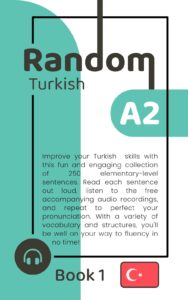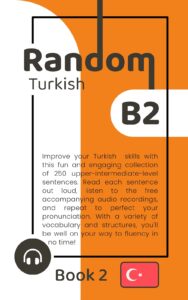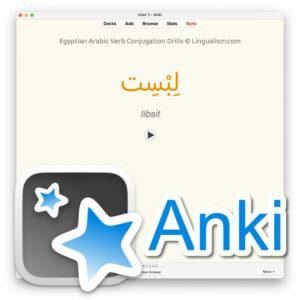The sections are numbered, but that does not mean you have to do them in order. Sections do not build on previous sections, and words and phrases found in each section are given even if they appear in other sections. That said, if you are a beginner, you will want to do sections 1-10 of Shuwayya ‘An Nafsi (the first book) first, as these lay out even the most basic words (pronouns, prepositions, conjunctions), which are largely excluded from the other sections.
Study the responses.
Listen to the MP3s and read the responses. Notice how words are used together. Making note of (or highlighting) groups of words used together in meaningful chunks and memorizing them will help you to produce more natural, idiomatic language.
(Note on MP3s: There is a 3-second pause between each response—not enough time for you to repeat it, but this should give you time to pause the audio.)
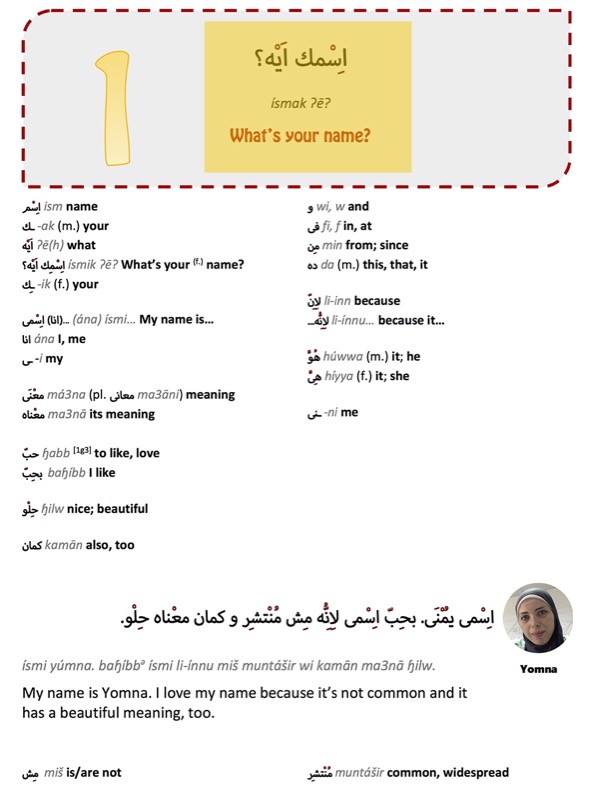
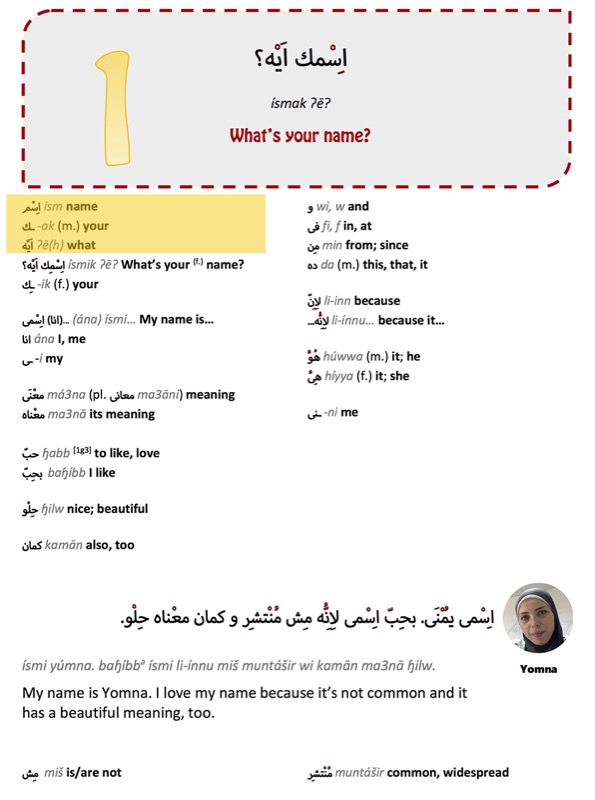

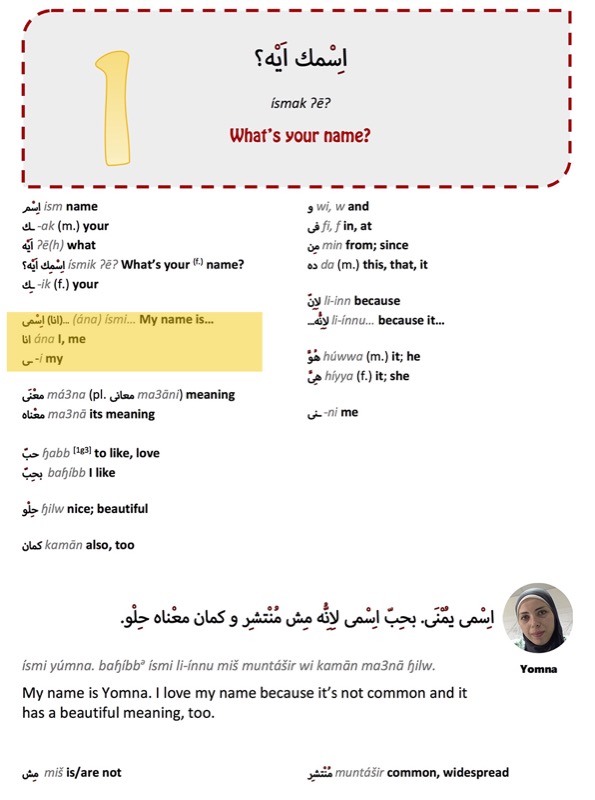

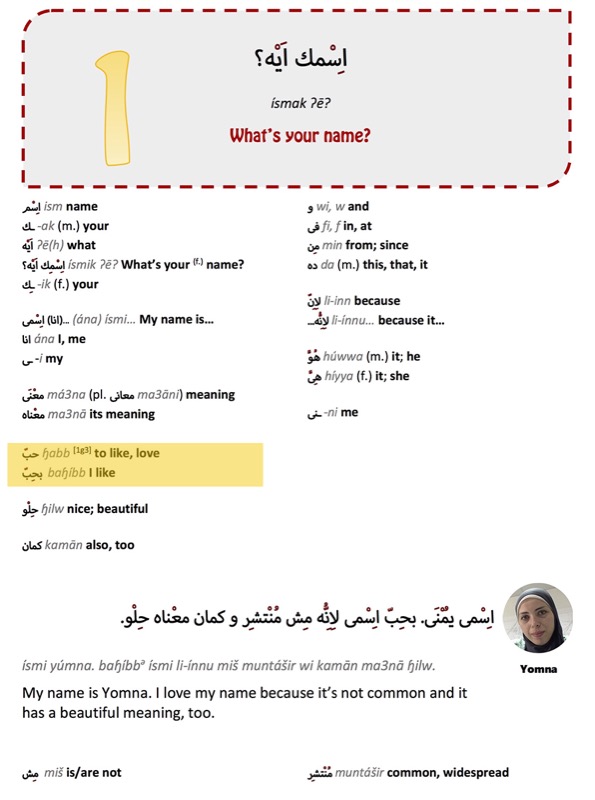
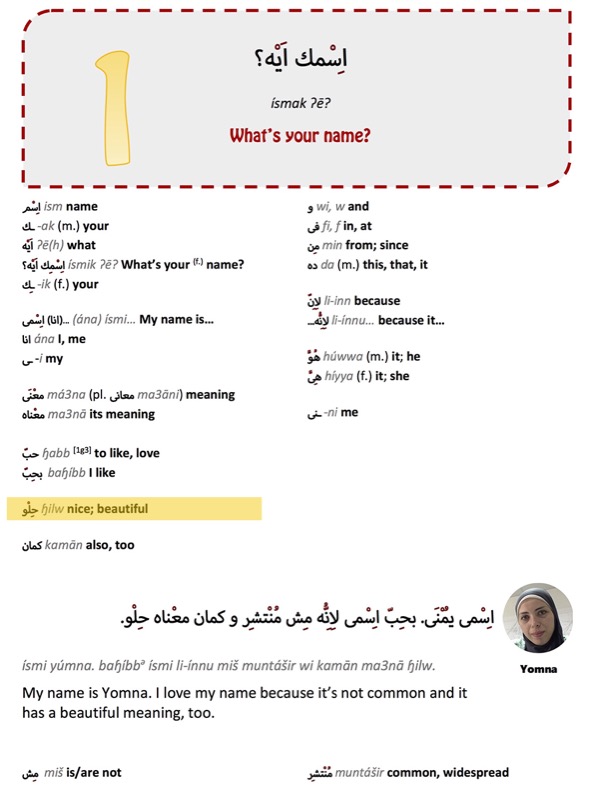
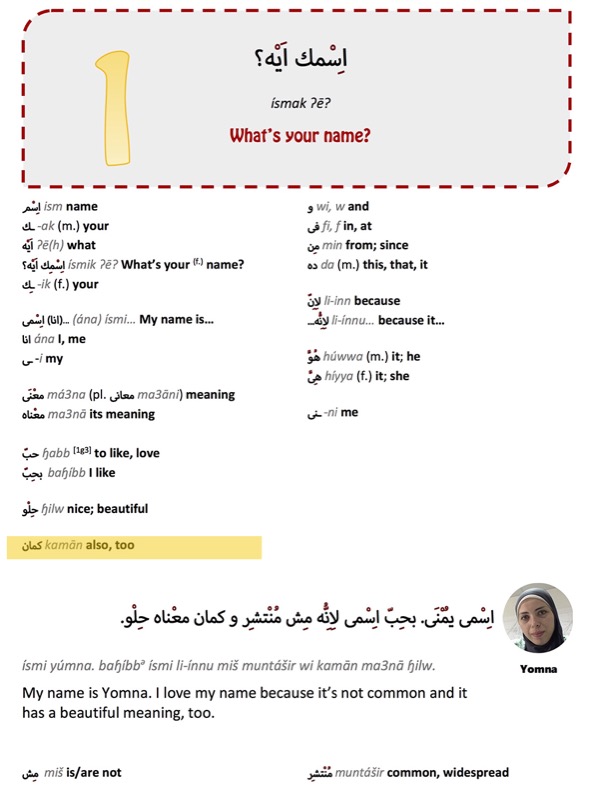
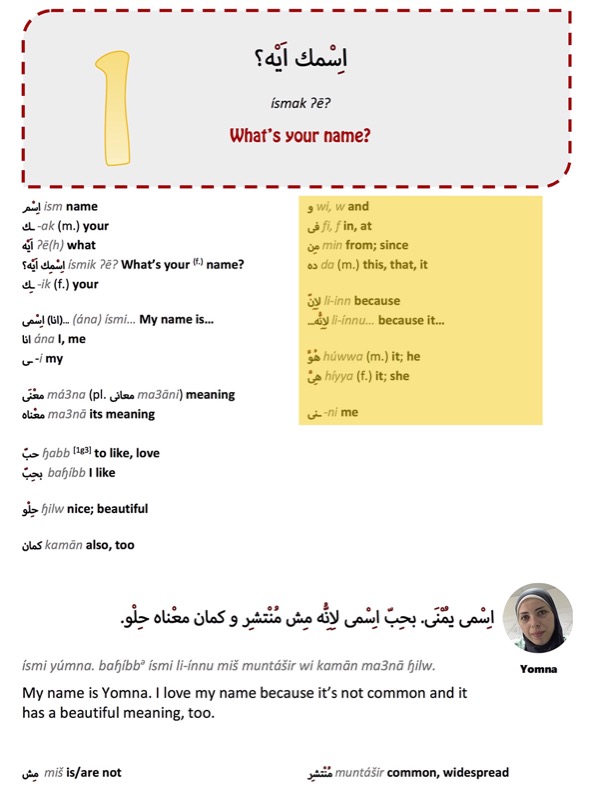
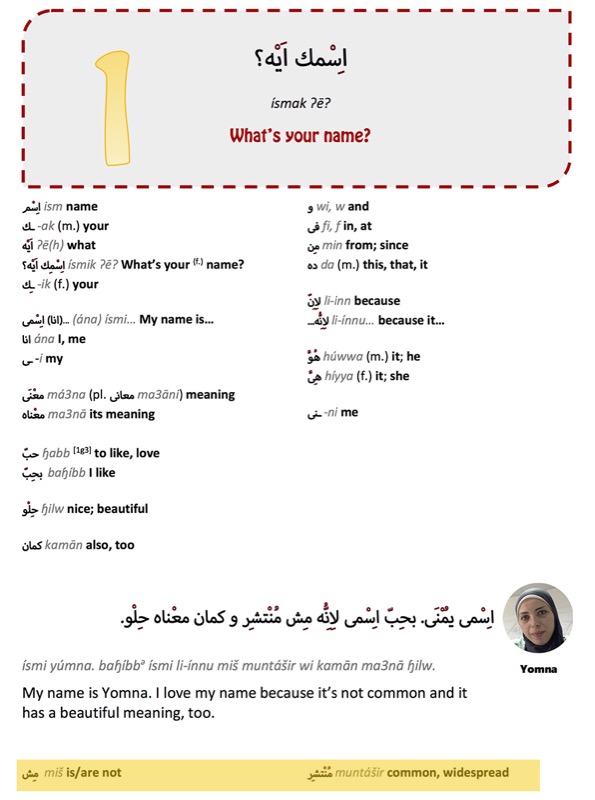
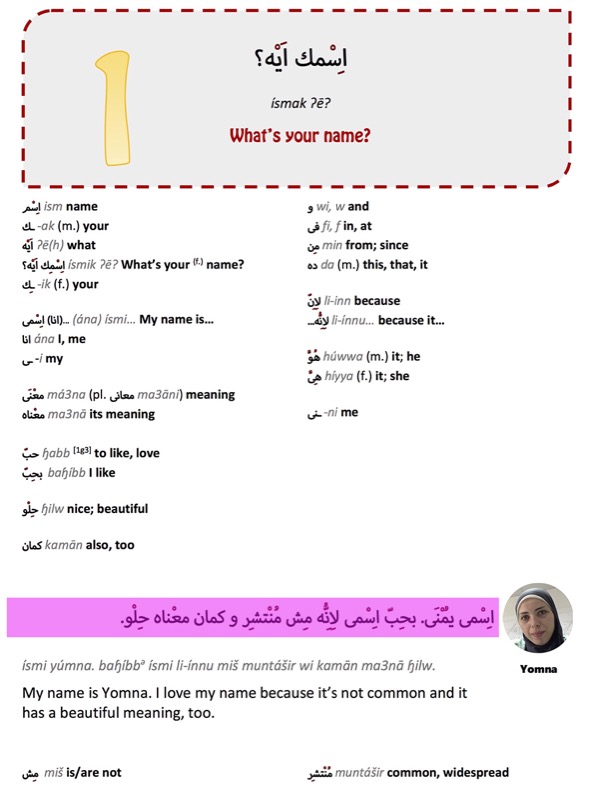
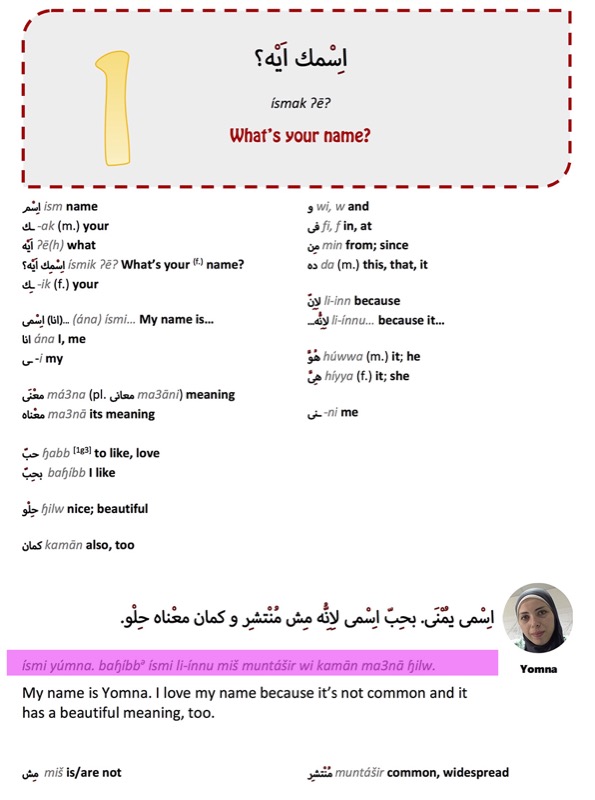
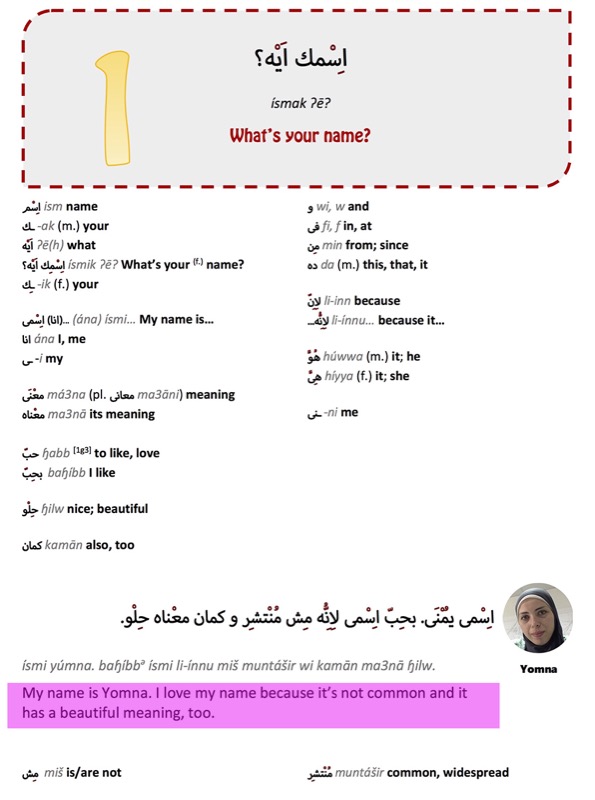
Give your own response.
 At the end of each section, there is a page where you can practice using words and phrases you have learned. First, write out the question in the “arrow” box. Then write your own personal response to the question. As you can see, there are places for two more responses. Whose? Be creative:
At the end of each section, there is a page where you can practice using words and phrases you have learned. First, write out the question in the “arrow” box. Then write your own personal response to the question. As you can see, there are places for two more responses. Whose? Be creative:
- Interview an Egyptian friend.
- Interview your teacher or a classmate.
- Use the questions to talk to Egyptians online on a language exchange website or chat room.
- Interview a friend or family member (in English!), and translate (or paraphrase) their answers in Egyptian Arabic.
- Imagine you are interviewing a celebrity or public figure. What might their answers be? Use what you know about them, find out more online (Wikipedia, etc.), or just be imaginative.
- Create your own fictional character from Egypt to answer the questions!
Try your best when answering, but don’t worry about making mistakes. These are part of the learning process. The book Egyptian Colloquial Arabic Vocabulary contains additional words and phrases you may want in order to write your responses. References to suggested sections of this book are given at the bottom of the page. You can also use other references, of course, such as a dictionary or native speakers. If you still cannot find the word you are looking for, go ahead and substitute it in your sentence with the Modern Standard Arabic word or even the English translation. Perhaps later you will have an opportunity to improve your responses.
Practice reading.
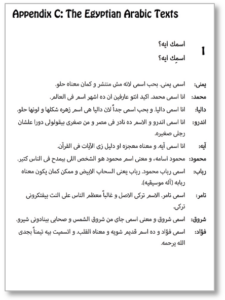 The questions and responses appear again in Appendix C, written without voweling and without the distraction of the phonemic transcriptions, translations, and glossaries. Practice reading them (with or without the audio).
The questions and responses appear again in Appendix C, written without voweling and without the distraction of the phonemic transcriptions, translations, and glossaries. Practice reading them (with or without the audio).
This article was adapted from the How to Use This Book sections of the books Shuwayya ‘An Nafsi and Kamaan Shuwayya ‘An Nafsi.


